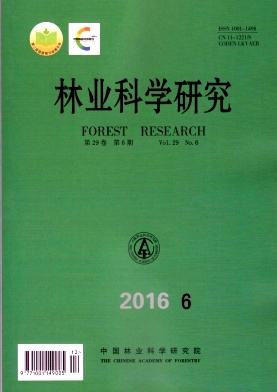|
[1]
|
Argus G W. Salix (Salicaceae) distribution maps and a synopsis of their classification in North America, north of Mexico [J]. Harvard Papers in Botany, 2007, 12(2): 335-368. |
|
[2]
|
王战. 中国植物志:第 20 卷第二分册[M].北京:科学出版社,1984.
|
|
[3]
|
涂忠虞. 柳树育种与栽培[M]. 南京:江苏科学技术出版社,1982.
|
|
[4]
|
施士争. 柳树的园林应用类型与改良[J]. 西北林学院学报,2008,23(4):200-204.
|
|
[5]
|
施士争,潘明建,张珏,等. 高生物量灌木柳无性系的选育研究[J]. 西北林学院学报,2010,25(2):61-66.
|
|
[6]
|
刘治昆,陈彩虹,陈光才,等. Cu2+胁迫对2种速生柳幼苗生长及生理特性的影响[J].西北植物学报,2011,31(6):1195-1202.
|
|
[7]
|
Dimitriou I, Aronsson P, Weih M. Stress tolerance of five willow clones after irrigation with different amounts of landfill leachate[J]. Bioresource technology, 2006, 97(1): 150-157. |
|
[8]
|
Dickinson N M, Pulford I D. Cadmium phytoextraction using short-rotation coppice Salix: the evidence trail [J].Environment International, 2005, 31(4): 609-613. |
|
[9]
|
王校锋,张文辉,崔豫川. 瑞典能源柳4 个无性系对土壤Hg2+胁迫的生理响应[J]. 西北植物学报,2013,33(3): 555-563.
|
|
[10]
|
Przyborowski J A, Sulima P. The analysis of genetic diversity of Salix viminalis genotypes as a potential source of biomass by RAPD markers [J]. Industrial Crops and Products, 2010, 31(2): 395-400. |
|
[11]
|
虞晓芬,傅玳. 多指标综合评价方法综述[J]. 统计与决策,2004(11):119-121.
|
|
[12]
|
鲜小林,陈睿,万斌,等. 西南地区野生春石斛资源搜集、保存与观赏利用价值评价[J].西南农业学报,2013,26(3):1184-1189.
|
|
[13]
|
李周园,刘艳红,戴腾飞,等. 应用层次分析法建立北京市引种乔木评价体系[J]. 北京林业大学学报,2010,32(S1):100-104.
|
|
[14]
|
刘孟霞,张延龙,牛立新,等. 运用层次-关联分析法综合评价加拿大引种草本花卉[J]. 西北农业学报,2009,18(4):261-266.
|
|
[15]
|
芦建国,杜毅. 层次分析法在高速公路缀花草地评价中的应用[J]. 南京林业大学学报:自然科学版,2010,34(3):161-164.
|
|
[16]
|
蒋艾平,刘军,姜景民. 基于层次分析法的乐东拟单性木兰优良种源选择[J]. 林业科学研究,2015,25(1):50-54.
|
|
[17]
|
刘希华,丁昌俊,张伟溪,等. 不同基因型欧洲黑杨幼苗氮素利用效率差异及其机理初探[J]. 林业科学研究,2010,23(3):368-374.
|
|
[18]
|
王斌会. 多元统计分析及R语言建模[M]. 广州:暨南大学出版社,2010.
|
|
[19]
|
吴晓星,刘凤栾,房义福,等. 36个欧美观赏海棠品种(种)应用价值的综合评价[J]. 南京林业大学学报:自然科学版,2015,39(1):93-98.
|
|
[20]
|
程红梅,周耘峰,窦维奇. 蜡梅品种园艺学性状综合评价模型及其应用[J]. 北京林业大学学报,2010,32(S2):160-165.
|
|
[21]
|
徐亮,司马永康,郝佳波. 园林树木的分类方法及观赏特性评价[J]. 西部林业科学,2007,36(1):123-126.
|
|
[22]
|
陈俊愉,邓朝佐. 用百分制评选三种金花茶优株试验[J]. 北京林业大学学报,1986(3):35-43.
|
|
[23]
|
林绍生,李华芬. 应用模糊数学评价观叶植物的观赏性[J]. 亚热带植物通讯,2000,29(2):43-47.
|
|
[24]
|
芦艳,樊保国,鲁周民. 果树的园林观赏性灰色综合评价[J]. 西北林学院学报,2014,29(2):248-251.
|
|
[25]
|
郭宝林,杨俊霞. 主成分分析法在仁用杏品种主要经济性状选种上的应用研究[J]. 林业科学,2000,36(6):53-56.
|
|
[26]
|
Wang G, Cao F. Integrated evaluation of soil fertility in Ginkgo (Ginkgo biloba L.) agroforestry systems in Jiangsu, China [J]. Agroforestry systems, 2011, 83(1): 89-100. |
|
[27]
|
廖浩斌,冯志坚,戴磊,等. 广东省11种杜英属植物园林观赏特性评价[J]. 广东园林,2012,34(3):66-69.
|





 DownLoad:
DownLoad: